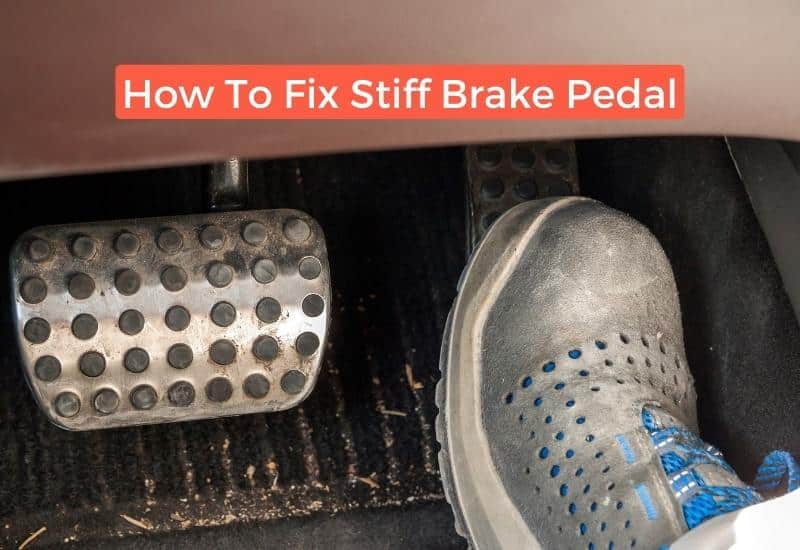
Normally when you step on the brake pedal, a modest amount of resistance tells you it’s engaging the brake booster. This gives you a degree of response that tells you the brakes are working, allowing you to brake harder or softer for the driving conditions.
When you step on the brake pedal, and it feels overly firm or hard to push, you lose a lot of the kinesthetic response you need to brake appropriately. It can cause you to brake too soon or too late, which can be a serious safety issue that needs to be attended to.
The most common reasons behind a hard brake pedal are often related to a problem with the brake booster, the brake fluid, or the master cylinder. Figuring out which faults are afoot calls for interpreting the other symptoms and investigating some of the brake system components.
How the Brake Pedal Should Feel Under Your Feet
When you step on the brake pedal, it should be modestly firm and should get slightly harder the farther you depress it toward the floor. When you let up the pressure, it should lift gradually along with your foot without fading to the floor or springing up.
This creates a direct relationship between your foot and the brake booster, which communicates pressure to the master cylinder and the hydraulic components of the car’s brake system.
6 Likely Culprits Behind a Stiff Brake Pedal and How to Address Them
A stiff brake pedal, which necessitates excessive force to activate the brakes, can be traced back to several underlying causes. A malfunctioning brake booster is among the most prevalent reasons for a hard brake pedal. Nonetheless, issues with the master cylinder and complications with other brake system components can also influence the brake pedal’s sensation.
Here are some possible causes for a hard brake pedal and expert tips on how to fix them:
1. A Failing Brake Booster
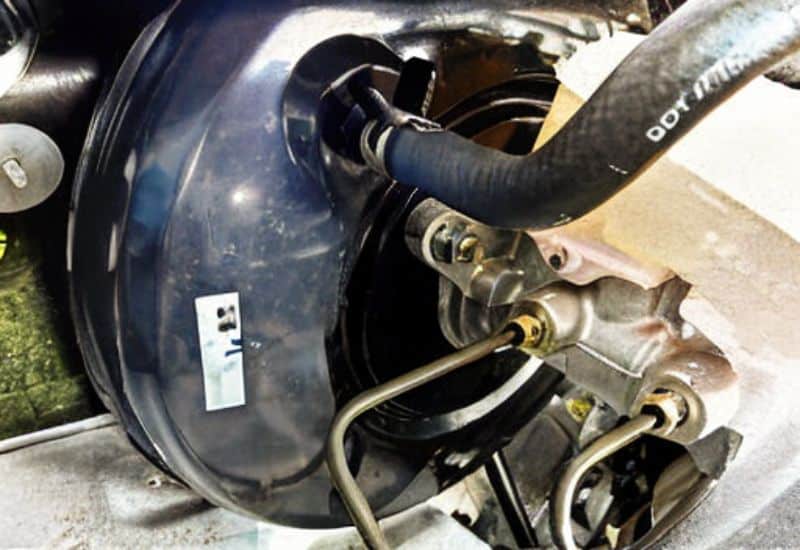
When a brake booster starts to fail, it affects the relationship between the brake pedal and the master cylinder, which can make the pedal feel overly hard or soft. The brake booster’s job is to both amplify the pressure of your foot on the brake pedal and then send that mechanical force to the master cylinder, where it is transformed into hydraulic pressure in the brake lines.
The brake booster has a vacuum inside as well as a spring. The spring returns the brake pedal back up from the floor. If it’s bad, the pedal might be hard to press down, and it might be slow to return the pedal to the normal position.
How to Diagnose a Brake Booster Problem
If the housing or seal on the brake booster’s diaphragm has been compromised, the brakes will respond poorly. You might also hear a wheezing or whistling noise when you step on the brake pedal.
You might also notice the car occasionally misfiring, which might not immediately seem like a brake booster problem. However, a compromised diaphragm allows ambient air into the system and affects the pressure in the vacuum hose, which affects the air side of the fuel/air mixture introduced in the intake manifold.
Brake boosters also have a check valve that keeps air from seeping into the brake lines and helps regulate the pressure change. This check valve can fail, even if the diaphragm of the booster itself is good.
Sometimes a bad brake booster will cause the car to turn on the check engine or brake warning light. When it does, the computer might throw a Code P0577, which indicates a pressure problem within the brake booster.
How to Fix a Bad Brake Booster
If a bad brake booster is causing your brake pedal to feel hard when you press it, then it will need to be replaced. There’s no way to patch a compromised diaphragm. However, this is the sort of fix that a capable DIY mechanic can usually handle.
The parts cost for a new brake booster will range between $90 to $175, with the real-world average being around $125.
You can expect a DIY replacement to eat up about two to three hours of your Saturday afternoon.
If you want a mechanic to handle the repair, you can expect them to add on another $100 to $150 in labor costs for a repair bill between $190 to $325.
2. A Bad Vacuum Pump
If your car’s brake booster uses a vacuum pump, it could fail, which would cause the brake pedal to feel overly stiff. In this case, the vacuum pump itself or sometimes the power steering pump helps the brake booster amplify mechanical force. Without sufficient vacuum, the relationship between your foot and the master cylinder is direct.
In a case like this, there wouldn’t be any effect on the engine’s fuel/air mixture. The car’s braking distance would also be appalling, to the point where if the pump completely fails, you’d need to pull over and have the car towed. If the pump is compromised or weak, you might only suffer from long braking distances. If your car is designed to use the same pump for power steering, you’d also notice the steering wheel being increasingly hard to turn.
How to Diagnose a Bad Brake Booster Vacuum Pump
Fixing a bad vacuum pump starts with diagnosing the issue. Follow the vacuum line from the brake booster back to the pump or the power steering pump. If it looks rotten or you can find a noticeable leak, you might get lucky, and all you have to do is replace the hose.
The wise move here is to test the pump to ensure it’s in good working order. You can inspect the pump via the following steps.
If the pressure is below 15 but over 10, check to see if the vacuum hose is kinked, clogged, cracked, or leaking.
If it’s below 10, chances are good the brake booster vacuum pump is failing or has completely failed and needs to be replaced.
How to Replace a Bad Brake Booster Vacuum Pump
If your test determines that the brake booster vacuum pump itself is bad, you can replace it with the following steps.
There are often delicate coolant lines near the brake booster vacuum pump, and you don’t want to get burned by accidentally touching one.
Also, check for oil leaks around the pump, which is a strong sign of something failing inside the pump itself.
The part cost for a new brake booster vacuum pump can range from $85 to $225, with a real-world average of $130.
If you’re not comfortable with handling the replacement, a mechanic will add another $75 to $125 of labor cost for a final repair bill between $160 to $350.
3. A Faulty Master Cylinder Can Cause A Hard Brake Pedal
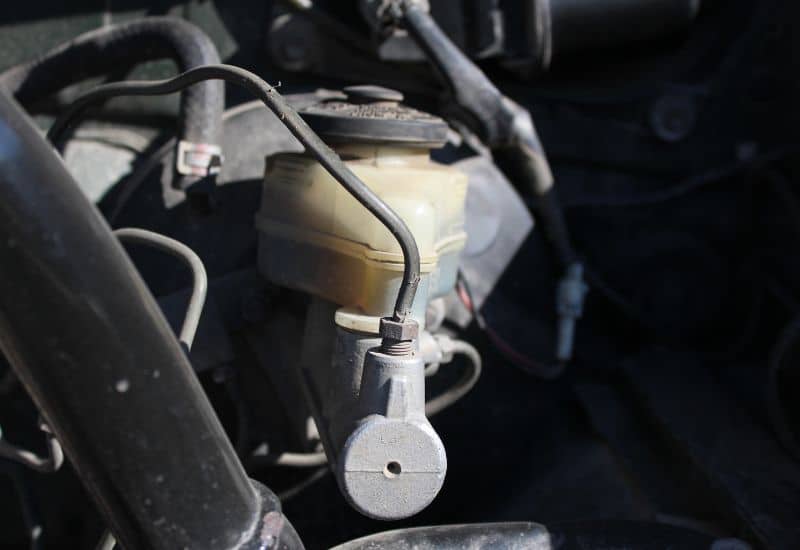
A failing master cylinder can make the pressure on the brake pedal feel overly hard. This is the point in the brake system where the mechanical force of the brake booster is translated into hydraulic pressure in the brake lines. When the master cylinder starts to fail, the pressure inside the brake booster can’t relieve itself efficiently, which impedes the physical motion of the brake pedal.
How to Diagnose a Bad Master Cylinder
When a master cylinder is failing or completely fails, the brake pedal is hard to push and then stays faded to the floor. This signifies a complete divorce of the force relationship between the master cylinder and the brake booster, which is felt in the pedal.
Before this point, you might have also noticed the brake pedal feels spongy. Braking distance might have been getting increasingly worse.
Many times, when a brake master cylinder fails, there’s also a leak at the cylinder or somewhere in the brake lines. If it is the master cylinder, you can look under the car and see brake fluid leaking out near the firewall.
How to Fix a Bad Master Cylinder
When a master cylinder fails, the only option is to replace it completely. The nuts-and-bolts part of replacing a bad master cylinder is relatively simple. Considering the hydraulic pressures involved, and the fact that the brake lines need to be precisely bled to keep air from getting into the brake lines, most people leave master cylinder replacement to the professionals.
If you’re a capable DIY mechanic with some brake job experience, you might be able to replace a bad master cylinder, which will save you a lot of money compared to bringing it to a mechanic.
The part cost for a new master cylinder can vary from $150 to $275, depending on the make and model. However, some luxury and foreign cars might cost much more expensive parts.
If you have a mechanic handle the master cylinder replacement, you can expect it to add another $125 to $200 to a final repair bill of $275 to $500.
4. Bad or Contaminated Brake Fluid
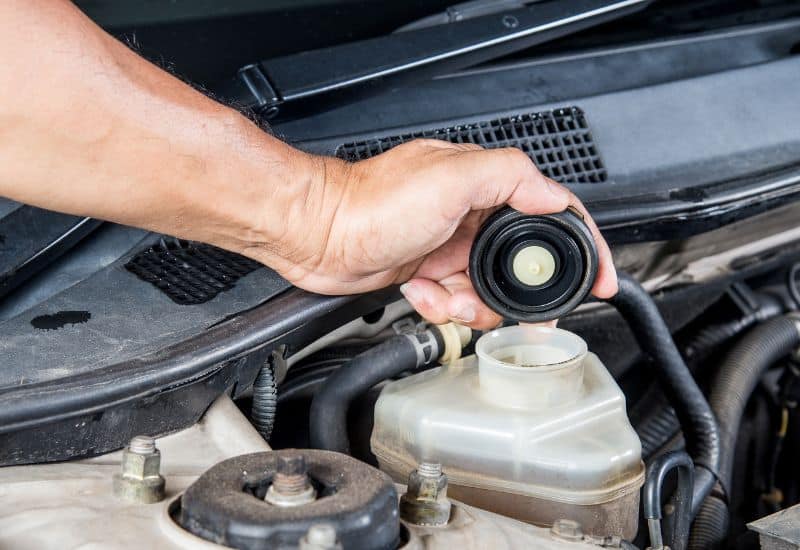
Old brake fluid or contaminated brake fluid can affect the pressure in the brake system, causing the pedal to feel overly stiff. Brake fluid has an average lifespan of around 45,000 miles; most automakers recommend replacing it every three years.
Brake fluid can also absorb moisture and humidity. This will give it a sludgy appearance in the reservoir which will affect brake performance as well as the feeling in the brake pedal.
Though contaminants can get into the brake fluid reservoir, especially if you have a failing master cylinder or one of the grommets on the brake fluid reservoir is leaking.
How to Diagnose Bad Brake Fluid
Normal brake fluid is semi-transparent yellow. If the brake fluid in your reservoir looks dark or you can see the particulate matter in it, then the brake fluid needs to be flushed and replaced.
If the brake fluid is less than two years old, has been through less than 30,000 miles, or you can clearly see particles suspended in the fluid, chances are good you have a leak somewhere around the reservoir. If you don’t find and repair this leak, you’ll just end up right back at square one again.
Usually, it’s one of the grommet seals on the bottom of the brake fluid reservoir. If you find brake fluid here, you might also need to replace the entire reservoir before completing a brake fluid flush and fill.
How to Replace Bad Brake Fluid
If you’re a modestly capable DIY mechanic, you can probably replace your own brake fluid. However, it can be messy and time-consuming if you don’t have professional tools to make the job go easily. You also have to be careful not to get air in the brake lines, which could make your previously hard brake pedal feel spongy.
How to Replace a Brake Fluid Reservoir
If your inspection turned up a leak in the reservoir, you will need to replace the reservoir before you perform the brake fluid flush and fill.
The parts cost for a new brake fluid reservoir range from as little as $20 to as much as $65.
The time it takes to swap out the old reservoir is usually less than an hour. Though you’ll need to drain or siphon out the old fluid in the reservoir.
If you want a mechanic to replace the old reservoir, it will add another $75 to $100 in labor costs for a final repair bill under $200.
5. Incorrect Pedal Ratio
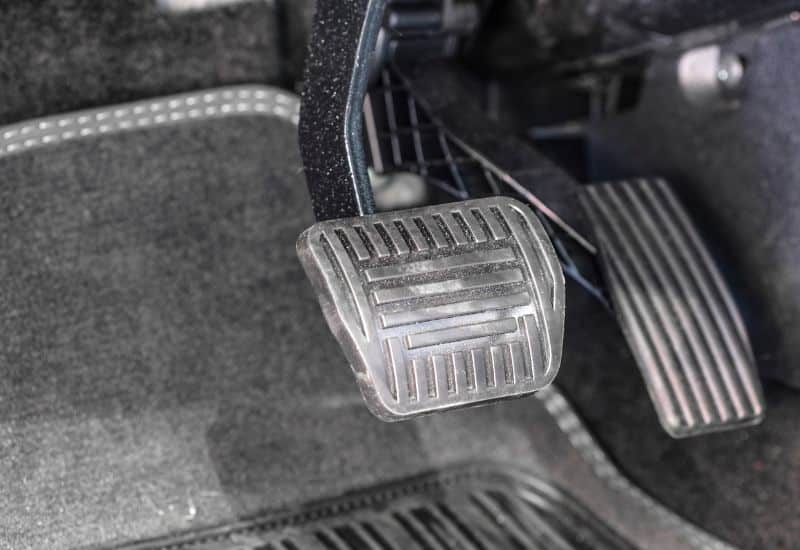
If you’ve recently been working on your brakes and you find the pedal is hard to push, it might be that your brake pedal ratio is off. All it takes is for the pedal ratio to be off by little as a quarter inch to affect the pedal’s feel.
In a case like this, the deviation allows the pushrod to move through to the brake booster, which impedes its ability to move the piston into the master cylinder. When this happens, the overly firm pedal you feel is actually it bottoming out.
How to Fix Incorrect Pedal Ratio
If you or a mechanic modify the brake pedal position or the pivot, you’ll need to reconfigure it. If a mechanic working on your brakes, they should cover this correction as part of their workmanship warranty.
6. A Seized Brake Caliper
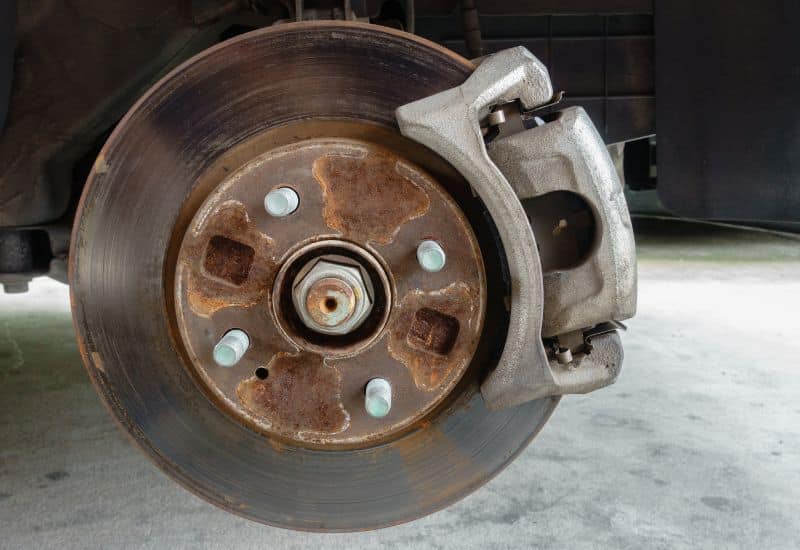
If your car is pulling to one side when you brake and the pedal feels hard you might be dealing with a seized brake caliper. In a car with disc brakes, each wheel has a dedicated brake caliper, pushing the brake pads against the disc rotor to create enough friction to decelerate the car.
Rust on the brake caliper slides and guide pins or other moving components can cause the brake caliper to get stuck or jam in one position. This can interfere with how the brakes engage, which can sometimes cause a stiff brake pedal.
How to Diagnose a Seized Brake Caliper
When a single brake caliper locks up, the car will typically pull very hard to one side when braking and might even pull to one side when driving down the road. Early on, you might also hear strange grinding and rasping noises or even smoke coming from the wheels as the brake pads wear away unevenly.
It’s also possible for a stuck brake caliper to rupture a hydraulic line. This will leave a little pool of brake fluid on or underneath the tire. At this point, it’s absolutely unsafe to drive the car.
How to Fix a Seized Brake Caliper
When a caliper is seized so badly that it’s causing a hard brake pedal, the problem is beyond what a good brake lube job can remedy. Compounding the problem is that you can’t just replace one caliper, as it will lead to a brake imbalance. So, you’ll have to replace the calipers and brake pads on both sides of the axle, even if the other caliper performs normally.
If you try to shortcut the repair by just replacing one brake caliper and pads, the car will pull to one side, and you’ll have braking imbalances that affect handling.
The part cost for a new brake caliper can range from $100 to $175 per axle.
You’ll also need to get new brake pads that can run from $45 to $150, with an average around $100 for two sets of average pads.
Replacing both brake calipers and pads is right on the verge of what a DIY mechanic can handle. The big concern is that when you replace the caliper, you have to bleed the hydraulic brake lines, or you risk air getting trapped in them. If you get this wrong, you’ll have spongy unresponsive brakes.
Taking your car to a mechanic will add another $125 to $275 to the final repair bill of $275 to $600, with a real-world average of around $450.
How to Diagnose a Hard Brake Pedal?
To diagnose what’s causing your hard brake pedal, it helps to start with the most likely suspects and
Examine the Brake Booster
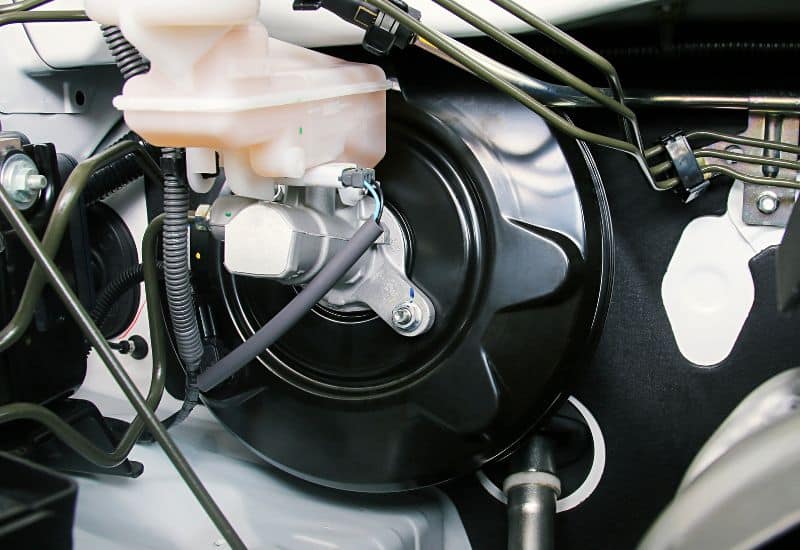
A brake booster problem is the common reason for a hard brake pedal. So, it’s definitely the first place to start. The problem could be the internal spring in the brake booster, a failure in the diaphragm, a failure of the check valve, or a failure in the vacuum hose.
You can quickly test the possible faults on your brake booster using the following steps:
Check Your Brake Fluid
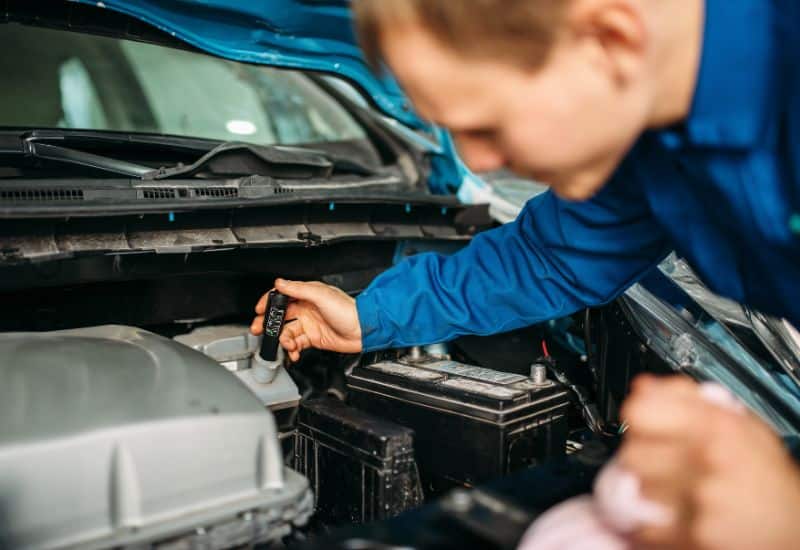
Brake fluid can absorb water, causing sludge. It can also suck in debris from a failed gasket or grommet. Both of which can lead to a hard brake pedal. Inspect the color and appearance of the brake fluid as well as check the level.
It needs to be flushed and refilled if it looks sludgy, dark, or dirty. Though you should also be thorough about finding any potential leaks. Look everywhere around the brake fluid reservoir as well as the master cylinder.
If brake fluid is missing, you find a leak, or you suspect a problem with the master cylinder, you’ll need to test it.
How to Prevent a Hard Brake Pedal
The first step in preventing a hard brake pedal is to replace your brake fluid every 30,000 miles or three years per the manufacturer’s instructions. In between brake fluid changes, make it a point to periodically check your brake fluid for any signs of degradation or sludge.
While you’re under the hood, also check for vacuum leaks. Running a hand around the brake booster or along the vacuum line leading to it might spot minor cracks and rotten spots before it causes a major issue.
Having a brake inspection performed once a year is also a good idea. This can be done anywhere that offers tire rotation. Trained professionals can then spot brake system problems early before you have to worry about leaks and component failures that lead to a hard brake pedal.
Frequently Asked Questions
Is it safe to drive a car with a stiff brake pedal?
Driving with a stiff brake pedal isn’t a good idea. Even if it’s a minor problem like a leaky vacuum hose affecting the brake booster or brake fluid that needs to be replaced. The increased braking distance and unresponsive braking increased your risk of a bad crash. If at any point, the brake warning light comes on, it means you have a major failure in the system, and you need to pull over before you lose all braking ability.
No More Hard Stops
A hard brake pedal can often be traced back to a fault in the brake booster or one of its related components. If you hear wheezing or hissing noises when you brake, it likely means that the diaphragm of the brake booster has failed; there’s a problem with the vacuum line or the check valve.
If your car has a separate vacuum pump, you’ll also need to check to make sure it’s working. This is as simple as disconnecting the vacuum line from the brake booster and placing a pressure tester on it to see if it’s pulling at least 10 inches of mercury.
The next most likely issue causing a stiff brake pedal is degraded or corroded brake fluid. If your brake fluid looks dark and murky, it must be replaced. Just make sure to check the reservoir and hydraulic lines for leaks that might be letting moisture or other contaminants in.
If you’re still struggling to figure out what’s causing your brake pedal to feel overly stiff, bringing it in for a brake inspection is wise. Even if your warranty or service plan doesn’t cover it, a comprehensive brake inspection usually costs less than $100. It will help you make more informed choices on what needs to be fixed or replaced.

Written By
Jason Farrell
Jason Farrell is a certified master technician, the editor of Mechanic’s Diary in Pittsburgh, Pennsylvania. He is ASE (Automotive Service Excellence) certified and earned a Bachelor’s Degree in Automotive Technology from Pittsburg State University. With nearly 18 prior years of experience in the automotive field, he has extensive knowledge about Domestic, European, and other foreign makes and models of cars and light trucks. Jason’s experience working as a technician and service manager at dealerships, gave him the experience and know-how of most aspects of inspection, diagnosis, and repair from engine and drivability to electrical, HVAC, brakes, steering and suspension and everything in between.



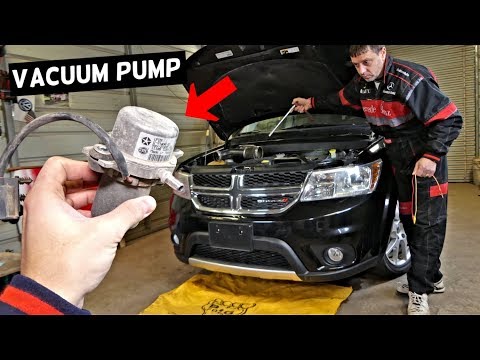
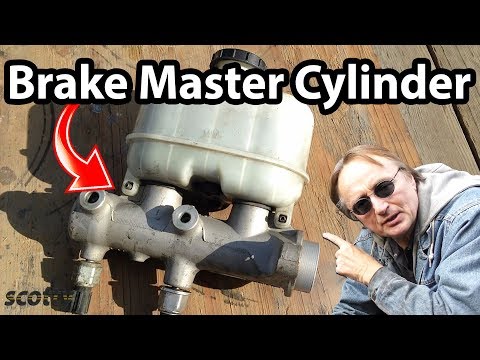
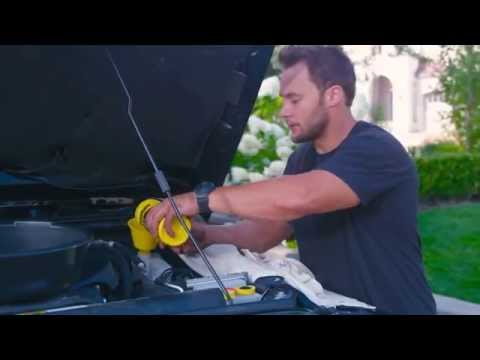
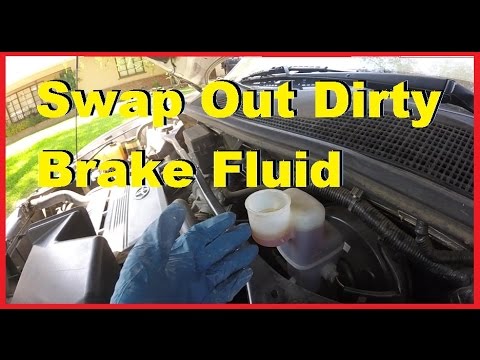
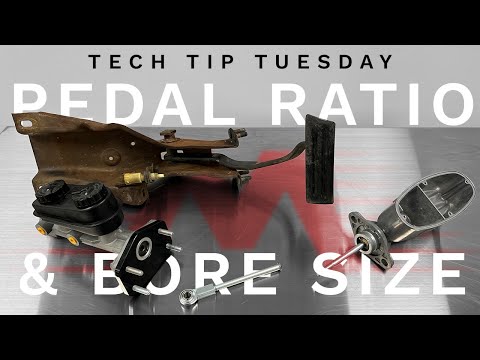
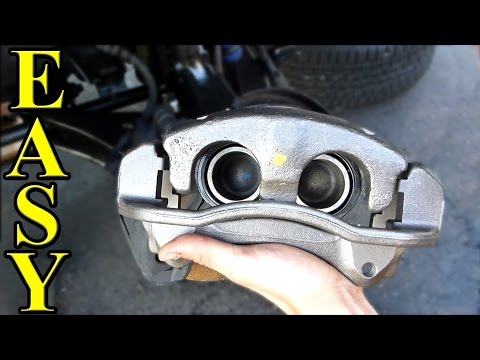
Thanks! After reading the whole article, I was able to work through my brake problems. Saving my 2007 Dodge Grand Caravan for yet another time, Pretty sure I wouldnt have figured it out on my own, Thanks again.
The best information on brake systems I’ve ever had . Recently purchased a 66 Chevy Chevelle , replaced front brakes with all new disc brakes and brake lines . Still have a hard pedal. Never considered flushing the brake lines . Thanks for all the advice.